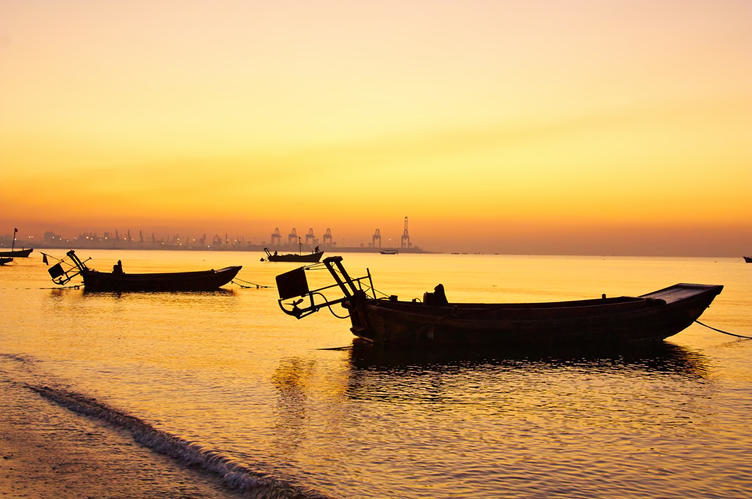
The Asian continent is home to many unique bodies of water that draw intrigue from tourists and travelers around the world.
From the waters of the Caspian (the world’s largest landlocked body of water and premier global source of Beluga caviar) to the Dead Sea (one of the most famous and hypersaline bodies of water on earth), each aqueous ecosystem features unique geographic characteristics that capture the imagination. For hydrologists and coastal researchers, this intrigue ignites as the Yellow Sea is reached.
The Yellow Sea takes its name from the nearby geologic phenomena that give the sea its distinctive appearance. Particles from the frequent sand storms occurring in the nearby Gobi Desert—alongside numerous Chinese rivers that send mineral-rich soils into the basin—give the surface of the water a crisp, golden sheen that’s popular with tourists from around the world.
Aside from its impressive appearance, the Yellow Sea is famous for its curious dimensions: While boasting over 146,000 square miles of surface area, its mean depth is a mere 144 feet. This shallow water ecosystem is truly unique, making up the largest muddy tidal area on earth, and featuring respectable biodiversity across plant, fish, and animal life.
The Yellow Sea itself is comprised of several smaller gulfs, including the inland Bohai Sea and the Korea Bay, which lay adjacent to the People’s Republic of China, the Democratic People’s Republic of Korea (North Korea) and the Republic of Korea (South Korea).
Unfortunately, the deep inland geography of the Yellow Sea is as much a curse as a blessing. The Yellow Sea’s proximity to China, North Korea, and South Korea, alongside its rich and profitable marine life, have put the Yellow Sea in jeopardy. Constant pollution from industrial manufacturing, agricultural runoff, and overfishing are just a few of the problems putting the Yellow Sea in danger. According to the International Union for Conservation of Nature, two-thirds of tidal wetlands in the Yellow Sea have disappeared over the past 50 years.
In particular, the receding of the Yellow River Delta has given conservationists concern. China’s Yellow River empties into the Bohai Sea, depositing over a billion tons of silt annually. The Yellow River Delta is the junction of these two bodies of water and is particularly susceptible to the changing environmental conditions brought on by the growing influence of industrialization. Both water and sediment flows to the delta have decreased dramatically over the past several decades.
The need for environmental intervention is evident in the delicate ecosystem of the Yellow Sea. While South Korea has committed itself to the conservation of the local wetlands, the increased rates of manufacturing and political tensions within China and North Korea present challenges for ecological security. Moving forward, entities will need to collaborate and develop sustainable conservation practices if they hope to preserve their shared natural resource.
This needed intervention starts by studying the Yellow Sea through 3D simulation. Our newest free grid, built with Grid+, will help you get started building a dynamic model.
Get your copy now and let us know how you are using it on Facebook and LinkedIn.

